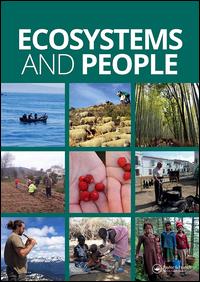Ver ítem
- xmlui.general.dspace_homeCentros Regionales y EEAsCentro Regional Patagonia SurEEA Santa CruzArtículos científicosxmlui.ArtifactBrowser.ItemViewer.trail
- Inicio
- Centros Regionales y EEAs
- Centro Regional Patagonia Sur
- EEA Santa Cruz
- Artículos científicos
- Ver ítem
State and transition model approach in native forests of Southern Patagonia (Argentina): linking ecosystem services, thresholds and resilience
Resumen
The sustainable use of ñire forests requires knowledge of its dynamics and management to maintain long-term main forest ecosystem services. The aim of this work was to develop a structural–functional state and transition model for ñire forests in southern Patagonia. For this, provincial inventory information was analyzed together with information from permanent PEBANPA plots (plots of Ecology and Biodiversity, natural environments in Southern Patagonia)
[ver mas...]
The sustainable use of ñire forests requires knowledge of its dynamics and management to maintain long-term main forest ecosystem services. The aim of this work was to develop a structural–functional state and transition model for ñire forests in southern Patagonia. For this, provincial inventory information was analyzed together with information from permanent PEBANPA plots (plots of Ecology and Biodiversity, natural environments in Southern Patagonia) and studies of ecology and eco-physiology in ñire forests. This allowed the description of plant communities on these ecological sites and the history of natural disturbances. Seven states and 10 negative transitions were described, as well the factors that trigger transitions (levels of grazing, fire and intense logging). Mature forests with low grazing, no extractive activity and complete canopy cover (>70%) correspond to the reference state or condition of greater integrity, and grassland or murtillar (dominance of Empetrum rubrum) with forest loss is considered the most degraded state. Negative transitions determine the threshold crossings associated with the reduction or loss of resilience to the previous or original state. The development of state and transition models allows for early warnings of deterioration and is a tool to achieve more productive and environmental value
[Cerrar]

Autor
Peri, Pablo Luis;
Lopez, Dardo Ruben;
Rusch, Veronica Elena;
Rusch, Graciela M.;
Rosas, Yamina Micaela;
Martínez Pastur, Guillermo José;
Fuente
International Journal of Biodiversity Science Ecosystem Services and Management 13 (2) : 105-118. (2017)
Fecha
2017-04
Editorial
Taylor & Francis
ISSN
2151-3732
2151-3740
2151-3740
Formato
pdf
Tipo de documento
artículo
Palabras Claves
Derechos de acceso
Abierto
 Excepto donde se diga explicitamente, este item se publica bajo la siguiente descripción: Creative Commons Attribution-NonCommercial-ShareAlike 2.5 Unported (CC BY-NC-SA 2.5)
Excepto donde se diga explicitamente, este item se publica bajo la siguiente descripción: Creative Commons Attribution-NonCommercial-ShareAlike 2.5 Unported (CC BY-NC-SA 2.5)
Metadatos
Mostrar el registro completo del ítem
Excepto si se señala otra cosa, la licencia del ítem se describe como info:eu-repo/semantics/openAccess
Ítems relacionados
Mostrando ítems relacionados por Título, autor o materia.
-
La investigación en bosques nativos acompañando al desarrollo sustentable
Peri, Pablo Luis (Colegio de Graduados en Ciencias Forestales de Santiago de Estero, 2020)Los bosques nativos en Argentina, con su gran variedad de ecosistemas que incluyen desde selvas subtropicales hasta bosques subantárticos, brindan a la sociedad diferentes servicios ecosistémicos (alimentos, agua, madera, ... -
Restauración de bosques nativos : la importancia del origen de la semilla
Mondino, Victor Alejandro; Pastorino, Mario Juan (2016)Cuando se habla de degradación en los bosques se hace referencia a la pérdida de productividad y biodiversidad ocasionada por distintos tipos de disturbios como los incendios, tala indiscriminada, el sobrepastoreo y las ... -
Propuesta de protocolos y lineamientos para evaluar planes de manejo de uso sustentable de los bosques
Rusch, Veronica Elena (Ediciones INTA, 2017)Par el empleo del protocolo, se propone pensar la evaluación como si fuera en una tabla donde se incluya cada una de las preguntas a considerar en la primera columna. La evaluación me permitirá responder si el aspecto de ...


